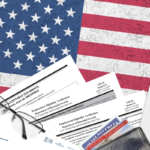When telephones were first introduced into businesses all those years ago, there were probably a fair few people who thought it would solve the problem of customer service. Finally, customers had a way to contact businesses quickly, and efficiently, and could get their queries sorted on the spot.
It hasn’t quite worked out like that. Of course, while calls are still the preferred human-to-human interaction for consumers – with 62% saying they prefer calls over email, chat, or bots – it isn’t always possible to have someone ready and waiting on the other end. Especially for SMEs, where it might not be feasible to hire a lot of staff specifically for customer service.
This has led to call abandonments being a big issue for businesses, with the number of abandoned calls rising at 20% year-on-year, and 60% of customers now saying that they don’t want to wait in a queue for longer than one minute.
If you’re running your own business, then, what exactly can you do about your abandonment rate and why does it matter so much?
Tackling the Issue Head-On
The first thing to note is that, even if your call abandonment rate is low, it’s very likely that you still have a call abandonment rate! Every business has an off day, and you’re likely to have a number of customers who’ve tried to get in contact with you, only to hang up after waiting too long.
Even a low abandonment rate can lead to loss of leads, damaged relationships, and have a negative effect on your bottom line, so you need to do everything in your power to deal with it. This starts with acknowledging the customer.
An impressive new technique that is doing the rounds at the moment is known as AI appointment setting, which involves using AI tech to automatically text someone who has tried to call, apologise to them, and then schedule a new call for them to get through to an agent.
Once this has been done, the chances of the customer calling back are strong, and that means you get to apologise twice – once through the automatically generated text, and then again human-to-human – help them with their needs, and subsequently demonstrate to the customer that you care about their experience.
There are a number of companies who have already initialised this practice, too, so the competition is already racing ahead.
The All-Important Relationship
It might sound like a simple solution, but, actually, it’s the best one for dealing with a simple problem. The reason so many add to an abandonment rate is that customers feel undervalued and unnoticed by the business.
We’ve all heard the words, ‘Your call is important to us and will be answered as soon as possible’, read by a robotic-sounding voice on the other end of the line. It’s almost impossible not to feel like a statistical nuisance for the company, rather than a real person with specific needs.
If you can counter that feeling by sending the customer an individual text that recognises their attempt to call, apologises, and then offers a resolution, then that customer is far more likely to feel seen and respected. As a result of this, you can keep your leads alive, keep your customers engaged, and ensure that they come back to do business again.
In a recent study, it was found that 62% of B2B customers and 52% of B2C customers cut ties with companies after a bad customer experience – and missed phone calls, dropped lines, and long wait times are all definitive signs of bad customer service.
Make sure you turn the tide by looking at your abandonment rate and sorting the technology to remediate the problem!







